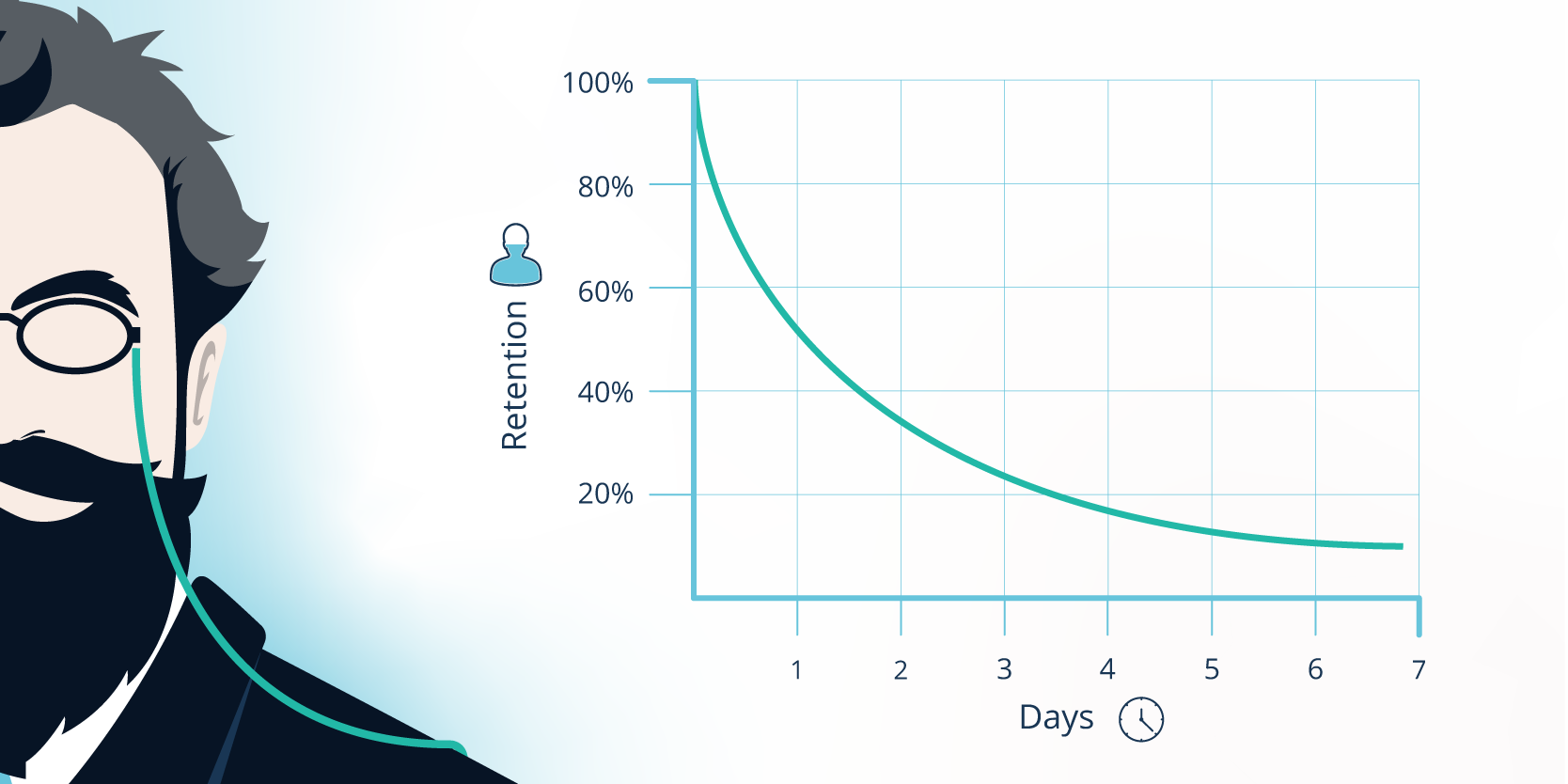Ebbinghaus Forgetting Curve and English Learning Process
Learning a new language, such as English, can be a rewarding and enjoyable experience. However, it can also be challenging and frustrating, especially when you forget what you have learned. Have you ever wondered why you can remember some words or grammar rules easily, while others seem to slip away from your memory? How can you improve your retention and recall of the English language?
One way to answer these questions is to understand the Ebbinghaus forgetting curve, a scientific theory that explains how memory works and how forgetting occurs. In this article, we will explore what the Ebbinghaus forgetting curve is, how it affects your English learning process, and how you can use it to enhance your English skills.
What is the Ebbinghaus forgetting curve?
The Ebbinghaus forgetting curve is a graphical representation of the forgetting process. The curve demonstrates the declining rate at which information is lost if no particular effort is made to remember it. The forgetting curve was defined in 1885 by German psychologist Hermann Ebbinghaus (1850-1909) in his book Memory.
Ebbinghaus studied the memorization of nonsense syllables, such as "WID" and "ZOF" (CVCs or Consonant–Vowel–Consonant) by repeatedly testing himself after various periods and recording the results. He plotted these results on a graph creating what is now known as the "forgetting curve".
The forgetting curve shows that memory retention decreases rapidly in the first few hours or days after learning, and then levels off gradually. According to Ebbinghaus, learners forget 50% of what they learned within the first hour and 90% after the first seven days. However, the exact shape and slope of the curve may vary depending on the type, difficulty, and meaningfulness of the information, as well as the individual differences of the learners.
The forgetting curve also shows that the strength of memory depends on the frequency and quality of repetition. The more often and the better you review the information, the more likely you are to remember it over time. This is known as the spacing effect, which is the opposite of the forgetting curve.

How does the Ebbinghaus forgetting curve affect your English learning process?
The Ebbinghaus forgetting curve has important implications for your English learning process. It means that if you do not review what you have learned regularly and effectively, you will forget most of it in a short time. This can lead to wasted time, effort, and money, as well as frustration and loss of motivation.
On the other hand, if you apply the spacing effect and review what you have learned at optimal intervals and methods, you will increase your memory retention and recall of the English language. This can lead to faster progress, better performance, and higher confidence.
Therefore, it is essential to understand how the Ebbinghaus forgetting curve works and how to use it to your advantage. Here are some tips and strategies to help you do that:
- Review your English lessons as soon as possible after learning them. This will help you consolidate the information in your long-term memory and prevent rapid forgetting.
- Review your English lessons at increasing intervals over time. This will help you strengthen the memory traces and reduce the forgetting rate. For example, you can review your lessons after one day, then after three days, then after a week, and so on.
- Review your English lessons using different methods and sources. This will help you reinforce the information from different perspectives and contexts. For example, you can review your lessons using flashcards, quizzes, games, podcasts, videos, books, or online platforms.
- Review your English lessons using active recall and spaced repetition techniques. These are proven methods to enhance your memory and learning. Active recall means testing yourself on the information instead of just reading or listening to it. Spaced repetition means repeating the information at the right time and frequency based on your level of mastery. You can use tools such as Anki, Quizlet, or Memrise to help you with these techniques.
- Review your English lessons in a way that is meaningful and relevant to you. This will help you connect the information to your existing knowledge and interests, and make it easier to remember. For example, you can review your lessons using examples, stories, or scenarios that relate to your goals, hobbies, or experiences.
Conclusion
The Ebbinghaus forgetting curve is a powerful theory that explains how memory and forgetting work. By understanding and applying this theory, you can improve your English learning process and outcomes. Remember that learning is not a one-time event, but a continuous and dynamic process that requires regular and effective review.
